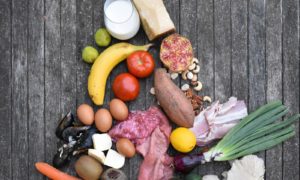Estimated reading time: 4 minute(s)
To survive as a species we’ve been programmed to remember and repeat behaviors that give us pleasure, such as eating, reproducing, caring for others, etc. We have special neurons that are in charge of activating the reward systems of our brain and identifying those behaviors. That is why today, we will explain the dangers of sugar and how to overcome them.
Not all foods activate our reward sensors when we eat. The reason why sweet flavors are often preferred over others is because evolutionarily our mesolimbic pathway – one of the neuron pathways that transfer dopamine from one brain region to another – reinforced sweet flavors as a “good” carbohydrate and a source of energy. That is because when our ancestors were out in the open looking for food to eat, different flavors indicated the status of each type of food. Acid meant it was not ripe yet, bitter was a warning sign, and sweet was a sign that the food was ripe.
But sugar back then compared to that of today are two very different things. Today an average adult consumes up to 200 teaspoons of sugar a week. If you’re reading this and think you don’t eat sugar, check your diet again because sugar isn’t just what we sweeten our coffee with.
What is sugar then?
It’s a carbohydrate. However, there are different types: monosaccharides and disaccharides.
Monosaccharides: 1 singular sugar molecule
- Glucose or dextrose: Occurs naturally in fruits and vegetables and is the main component of most carbohydrates and starches. This type of sugar is processed as energy for the body.
- Fructose: is present in fruit and is processed through the liver. It’s naturally present in fruits, vegetables, and honey.
- Galactose: part of lactose, the sugar found in milk.
Disaccharides: 2 sugar molecules
- Sucrose: glucose + fructose. Known as table sugar and is extracted from cane or beets.
- Lactose: galactose + glucose. It’s the natural sugar in milk.
- Maltose: glucose. It’s formed when starch is processed and it appears naturally when germinating seeds such as barley.
When we eat sugar our bodies either use it as energy or store it as fat cells. This depends a lot on each person’s metabolism. When there’s an abundant amount of sugar in the bloodstream, the pancreas releases a hormone called insulin and it’s here when sugar is stored in the muscles, liver, and fat cells.
The problem is that our bodies aren’t equipped to process the amounts of sugar found in today’s store-bought products. Most are foods that cause spikes in blood glucose levels which drop just as quickly as they rose, causing cravings or the feeling of false hunger and the release of more insulin to be processed. Eventually, this overproduction of insulin wreaks havoc on our body’s natural functions and can increase the risk of heart disease, kidney disease, diabetes, and more.
Sugar is present in almost every packaged product – sauces, juices, broths, yogurts, soups, cookies, cereals, bread, pastries – and some have a variety of different types of sugar, which makes it nearly impossible to understand what it contains. Unless, you research what each thing is, and honestly, who has time for that?
Honey, agave syrup, maple syrup, rice syrup, maltodextrin, lactose, dextrose, fructose, cane sugar, beet sugar, corn syrup, barley malt, icing sugar, diastase, galactose, glucose, ears, molasses, mannitol … are just a few of the different names for sugar. And they are 56!
So if we say that too much sugar makes us sick, how come we eat fruits? Fruits, in addition to fructose, also contain fiber. When we eat fruit and the digestion process begins, the fiber causes the sugars present in the food to be released gradually while at the same time providing us with nutrients, vitamins, and minerals. Only by refining sugars in food do we lose all their benefits. For example, juices and soft drinks are digested immediately and only as sugar.
Sugar is Addictive
A typical experiment to study the effects of sugar in rats is done as follows: rats are deprived of food for 12 hours and then given a sugar solution alongside their traditional food. After a month of doing this, the rats develop behaviors similar to those of drug addicts, they can’t stand long periods without it and show signs of anxiety and depression during periods when they don’t eat.
These studies also showed that the withdrawal syndrome from sugar is real and that the rats exhibited post-addiction physical symptoms such as cramps, psychological symptoms such as depression, and impulsive behaviors.
The recent warnings against sugar are not just because of what has been studied in rats. It turns out that in March of last year, the World Health Organization estimated that only 5% of the calories we consume daily should come from sugar, indicating that both adults and children should reduce the amount of sugar they consume.
Another piece of evidence of the negative impact of sugar on our lives is in an article published by ‘Public Health England’ which showed how sugary products, soft drinks, and their marketing is a key factor influencing the obesity crisis in England, where 1 in 3 children are obese. Famous personalities like Chef Jamie Oliver have been fighting to make the dangers of sugar known with his documentary where negative side effects range from rotting teeth to necessary amputations due to diabetes. Other organizations have also published info warning of the dangers like the non-profit Action on Sugar.
Dr. Alison Boyd, director of the Sugar Nutrition UK group explains what in my opinion is the most valid point of this whole discussion and that is, even though sugar (especially the exorbitant amounts we consume today) cause problems to our health, the real issue is that it shows just how far we’ve lowered the bar when it comes to eating quality food. On top of which we’re eating more caloric diets and engaging in less physical activity causing the perfect storm.
What We Can Do
- Avoid drinks such as sodas, pasteurized juices, pre-made iced teas, energy drinks, and other such liquids.
- Drink more water and, if you get bored with the taste, add slices of lemon or orange and other natural flavors to make it more pleasant.
- Add vegetables such as spinach or kale to natural juices/smoothies, this provides you with more nutrients and is an extra serving of vegetables a day.
- Avoid consuming processed foods such as bread, pastries, donuts, cookies, fruit yogurts, pudding, among others.
- Eat a good breakfast with protein, vegetables, and fruits because this helps regulate blood sugar and prevent cravings during the day.
- Avoid cereal. Even if it says the word ‘whole’ or fitness or whatever synonym, they are high in sugar and not so much in fiber. For a food to be considered low in sugar it must have 5 grams or less per 100-gram serving.
- Identify the sugary foods you usually eat and learn to read their labels. If the word sugar or its synonyms is among the first three ingredients, avoid it.
- Limit the intake of refined carbohydrates in your diet: bread, white rice, pasta, potatoes. Instead include complex carbohydrates that come from fibrous vegetables and tubers such as sweet potatoes.
- Avoid fast food and learn to cook at home. This will help you control what you eat better.
- Maintain an active lifestyle, walk to work, take the stairs instead of the elevator, etc. This will help you burn more energy and stay healthy.











